Asbestos roofs have been a common feature in many buildings due to their durable materials and insulation properties.
The risks associated with asbestos exposure and the harmful fibers it contains cannot be overlooked.
This article explores what an asbestos roof is, why it’s crucial to clean it effectively, and the potential health and environmental hazards it poses.
It guides you on identifying an asbestos roof, the safe cleaning methods to employ, alternatives if replacement is necessary, and the proper disposal protocols for hazardous waste.
Dive in to better understand how to manage this hidden risk effectively and ensure compliance with local regulations.
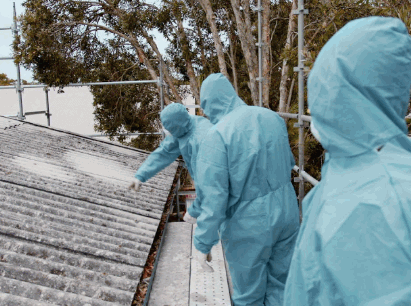
What Is Asbestos Roof?
An asbestos roof is a roofing structure that includes asbestos fibers, known for their durability and resistance to weathering, making it a widely used material in the past. These roofs were commonly used in construction due to their heat resistance and longevity, making them a popular choice during the mid-20th century. However, the harmful nature of asbestos fibers has raised significant health concerns, as exposure can lead to serious respiratory issues and contamination. Understanding the composition and implications of asbestos roofs is crucial for homeowners, contractors, and maintenance personnel alike, especially considering the local regulations surrounding their use and removal.
Look into: How Much Does It Cost To Remove Asbestos Walls
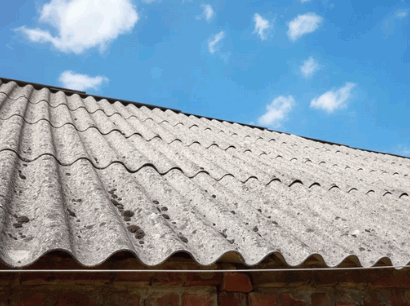
Why Is It Important To Clean Asbestos Roof?
Cleaning an asbestos roof is essential for maintaining both safety and structural integrity, as accumulated dirt, moss, and algae can lead to further degradation of the materials and potential exposure to harmful fibers, requiring effective cleaning methods.
Ensuring that the roof is not only visually appealing but also secure is vital for homeowners and contractors alike, as neglecting proper cleaning can have grave consequences for health and safety. Regular maintenance helps mitigate risks and complies with local regulations regarding asbestos management.
To emphasize the importance of this task, cleaning methods and treatments should be carefully selected to avoid disturbing toxic materials.
- When conducting any cleaning activity, employing safety precautions, such as protective gear and specialized tools, is crucial to prevent inhalation or contact with harmful fibers.
- Routine inspections combined with appropriate cleaning using soft washing techniques not only protect health but also enhance the lifespan of the roof, ultimately saving costs on repairs.
Adherence to local regulations ensures compliance and protects community health by minimizing risks associated with asbestos exposure. By understanding the significance of these practices, homeowners can create a safer living environment while preserving their property’s value.
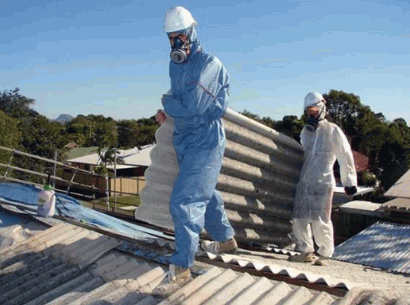
What Are The Risks Of Having Asbestos Roof?
Having an asbestos roof poses multiple risks, primarily due to the potential for harmful fibers to become airborne, leading to significant health and environmental concerns regarding exposure. Exposure to asbestos is linked to severe respiratory diseases, including asbestosis and lung cancer, which can result from both accidental inhalation of fibers and long-term exposure to dust. Furthermore, as roofs age and deteriorate, the risk of contamination increases, making it critical for property owners to understand the associated dangers and take necessary precautions.
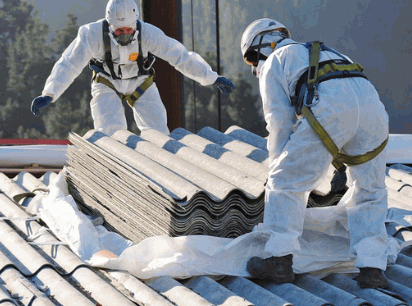
What Are The Health Risks Of Asbestos Exposure?
Asbestos exposure can lead to several serious health risks, including respiratory diseases, lung cancer, and mesothelioma, primarily due to the inhalation of harmful fibers that can remain in the lungs for years, emphasizing the need for respiratory protection. These diseases often develop over time, making early detection challenging and underscoring the importance of safety precautions for individuals who may come into contact with asbestos materials. Understanding these risks is essential for homeowners, contractors, and maintenance personnel tasked with managing asbestos roofs.
Individuals who work with or are exposed to asbestos may experience a range of symptoms, such as persistent cough, chest pain, and shortness of breath. These ailments can indicate serious conditions related to asbestos exposure, which include:
- Asbestosis: A chronic lung disease that leads to inflammation and scarring, causing severe breathing difficulties.
- Mesothelioma: A rare and aggressive form of cancer primarily affecting the lining of the lungs.
- Lung Cancer: Directly linked to asbestos exposure, often presenting with symptoms like weight loss and fatigue.
To mitigate these risks, adhering to strict safety protocols is imperative. Appropriate protective gear, such as breathing masks and personal protective clothing, can greatly reduce exposure levels, safeguarding both individual health and that of others in the vicinity.
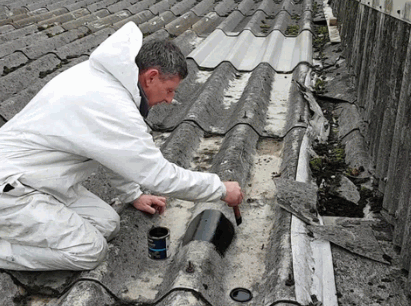
What Are The Environmental Risks Of Asbestos Roof?
The environmental risks of having an asbestos roof are significant, as the deterioration of asbestos fibers can lead to contamination of surrounding soil and air, posing threats to both wildlife and human health and necessitating effective clean-up strategies. When asbestos materials break down, they release harmful fibers that can easily be carried by wind or water, further spreading contamination and necessitating urgent clean-up measures to protect the environment. Therefore, understanding and mitigating these risks is paramount for homeowners and contractors involved in asbestos management.
As the legacy of asbestos persists, it has become increasingly clear that its presence not only jeopardizes human well-being but also has dire implications for local ecosystems.
- Wildlife can suffer from respiratory issues and other health complications when exposed to asbestos fibers.
- Contaminated soil disrupts natural habitats, making it difficult for plants and animals to thrive.
- Aquatic ecosystems face threats when runoff carries these harmful fibers into rivers and lakes, compromising water quality.
Community awareness and proactive measures are essential to prevent long-term damage from asbestos contamination, highlighting the need for comprehensive remediation strategies and adherence to local guidelines to protect both public health and the environment.
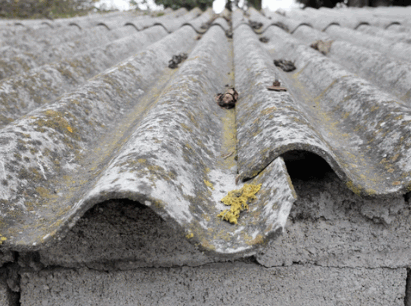
How To Determine If You Have Asbestos Roof?
Determining whether you have an asbestos roof requires careful inspection and, often, the expertise of qualified contractors who can identify specific materials and assess their condition using appropriate cleaning materials. Homeowners should look for signs such as the age of the roof, the type of materials used, and any visible damage that may indicate the presence of asbestos.
It’s crucial to consider the surrounding environment, including previous renovations or repairs that might have involved hazardous materials, to ensure safe handling. To help in your inspection, follow these steps:
- Examine roof age: If your home was built before the 1980s, it may likely contain asbestos.
- Inspect material types: Roofing materials like shingles may contain asbestos fibers, especially if they appear textured.
- Look for visible damage: Cracks, tears, or deterioration in roofing can be indicators of harmful materials.
If there’s any doubt about the findings during your inspection, it’s prudent to consult professionals who can provide guidance on safe cleaning and maintenance practices. These experts are trained to conduct thorough evaluations, ensuring safety measures are in place and determining if removal is necessary.
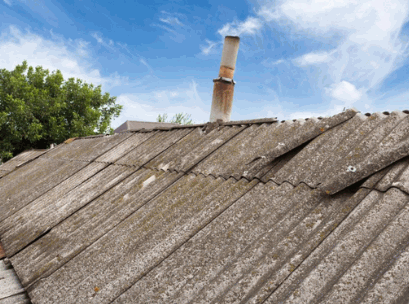
How To Safely Clean Asbestos Roof?
Safely cleaning an asbestos roof is a process that requires strict adherence to safety protocols and regulations, including the use of a breathing mask and protective gear, to minimize the risk of exposure to harmful fibers. Before undertaking any cleaning, it is imperative to equip oneself with appropriate personal protective equipment (PPE), such as a breathing mask, personal protective clothing, and other safety gear designed to protect against inhalation and skin contact. Following established guidelines ensures that the cleaning process is both effective and safe for all involved.
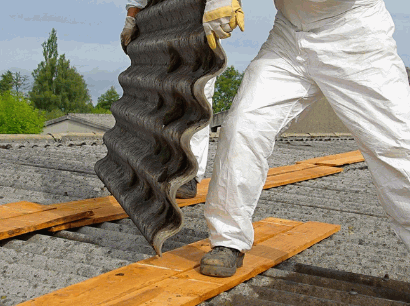
What Are The Precautions To Take Before Cleaning Asbestos Roof?
Before cleaning an asbestos roof, it is crucial to take specific precautions, such as using protective gear and understanding local regulations, to ensure the safety of all individuals involved, particularly in preventing exposure to harmful asbestos fibers. Protective measures are not just essential; they are a legal requirement that safeguards health and wellbeing. This includes wearing appropriate protective gear such as a breathing mask, personal protective clothing, and ensuring that the working environment is secure from unauthorized access. Understanding local regulations regarding asbestos handling also plays a key role in preparing for the cleaning process.
Several key safety measures and precautions should be followed before commencing work:
- Protective Gear: Always use NIOSH-approved breathing masks and coveralls designed for asbestos work.
- Site Preparation: Secure the area to prevent unauthorized personnel from entering.
- Local Regulations: Familiarize yourself with state and local laws pertaining to asbestos handling to avoid legal repercussions.
- Asbestos Disposal: Plan the disposal of asbestos-containing materials in accordance with local guidelines.
- Emergency Plans: Prepare an emergency response plan in case of accidental exposure.
By adhering to these precautions, individuals can significantly reduce risks and create a safer environment for everyone involved, thus ensuring compliance with local regulations.
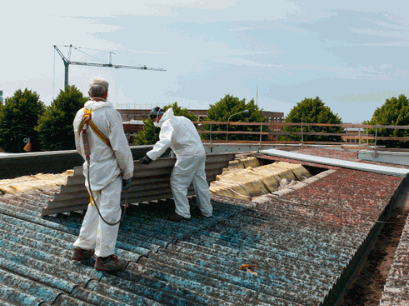
What Are The Steps To Clean Asbestos Roof?
To clean an asbestos roof safely, you should follow a series of detailed steps that minimize the risk of disturbing harmful fibers while effectively removing dirt, moss, and algae using gentle techniques like soft washing. Prioritizing safety throughout this process is essential, particularly in ensuring the use of appropriate cleaning equipment and personal protective equipment., as neglecting necessary precautions can lead to serious health hazards. Start by using a soft-bristle brush to gently scrub the surface with a mild detergent mixed with water; avoid using high-pressure washers that could dislodge asbestos particles. After thorough scrubbing, rinse the roof with a garden hose, ensuring that all cleaning materials are properly disposed of to comply with hazardous waste regulations.
Following these initial steps, it’s crucial to focus on personal safety. Here are some precautions to consider:
- Wear a disposable respirator rated for asbestos.
- Use protective goggles and gloves to prevent exposure.
- Secure the work area to restrict access.
Once the roof is cleaned, all materials used in the cleaning process must be sealed in heavy-duty plastic bags. Proper disposal is key:
| Item | Disposal Method |
|---|---|
| Cleaning materials | Hazardous waste facility |
| Protective gear | Local hazardous disposal |
Adhering to these guidelines ensures that you not only clean the roof effectively but also protect your health and the environment.
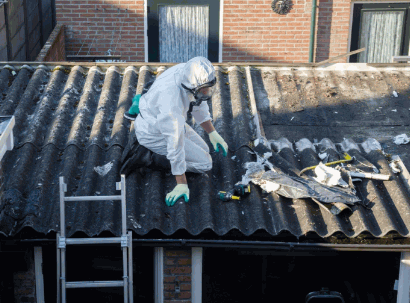
What Are The Alternatives To Cleaning Asbestos Roof?
Regarding managing an asbestos roof, there are several alternatives to cleaning that may be more effective and safer in the long run, especially if the roof is in poor condition. Options include professional removal or replacement of the asbestos roofing materials, which can eliminate the risks associated with cleaning and maintenance. Engaging qualified contractors to assess the situation is crucial in determining the best course of action based on the roof’s condition and local regulations.
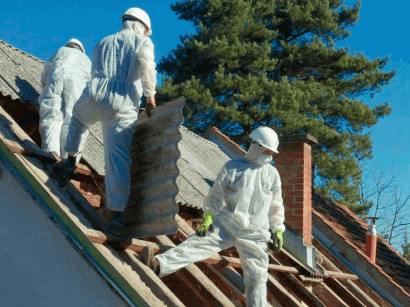
What Are The Different Types Of Asbestos Roof Replacement?
There are various types of materials available for replacing an asbestos roof, each offering different durability, aesthetics, and cost considerations.
Regarding selecting the right material, homeowners should consider their specific requirements and climate conditions. For instance, metal roofing stands out for its resilience and can last up to 50 years, while asphalt shingles are favored for their affordability and range of colors. Synthetic materials offer innovative designs that mimic traditional styles yet are lighter and more environmentally friendly.
- Metal Roofing: Exceptional longevity, ideal for varying climates.
- Asphalt Shingles: Cost-effective with diverse aesthetic options.
- Synthetic Materials: Environmentally beneficial and versatile in design.
Consulting with knowledgeable contractors is essential, as they play a crucial role in the installation process and can provide valuable insights on local regulations and the best materials suited for the specific roof replacement project.
What Are The Costs Of Asbestos Roof Replacement?
The costs of replacing an asbestos roof can vary significantly depending on several factors, including the type of materials chosen, labor fees, and the complexity of the project. On average, homeowners should expect to invest in both the removal of existing asbestos materials and the installation of new roofing, which can lead to a substantial financial commitment. It is advisable to obtain quotes from qualified contractors to get a clear understanding of the potential costs involved.
When evaluating replacement costs, it’s essential to break down the various components meticulously. Key factors include:
- Labor: Skilled professionals specifically trained in handling hazardous materials can demand higher wages, contributing significantly to overall costs.
- Materials: The choice of roofing materials, whether asphalt, metal, or composite, can influence both appearance and durability, impacting long-term maintenance costs.
- Permits and Fees: Depending on local regulations, homeowners might need to secure permits, which could add further expenses to the project.
Ultimately, thorough contractor quotes ensure a transparent view of expenses, helping homeowners to budget effectively for a safe and successful roof replacement.
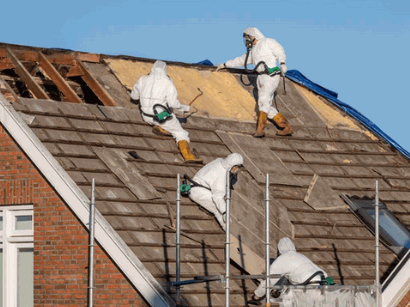
How To Dispose Of Asbestos Roof Safely?
Disposing of asbestos roofing materials safely is a critical process that must adhere to stringent regulations and safety protocols to ensure minimal risk of exposure and environmental contamination. It is essential to work with licensed professionals who can handle the hazardous waste according to local guidelines, ensuring that all materials are securely packaged and transported to designated disposal facilities. Understanding and following local regulations is crucial to safeguarding community health.
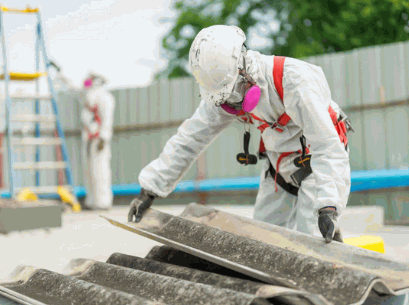
What Are The Regulations For Disposing Asbestos Roof?
Regulations for disposing of asbestos roofs are established to protect public health and the environment, requiring specific procedures to manage the hazardous waste safely. These regulations often stipulate the involvement of licensed contractors for the removal, packaging, and disposal of asbestos materials, ensuring that harmful fibers do not become airborne during the process. Familiarizing oneself with local guidelines is essential for compliance and safety.
Asbestos is a known carcinogen, and its improper handling poses significant risks to both workers and the general public. Therefore, adhering to the following key regulations is crucial:
- Licensed Professionals: Engaging licensed contractors not only guarantees expertise but also ensures that all work complies with mandatory safety standards.
- Documentation: Proper records must be kept throughout the process, including notifications to local authorities and disposal certificates.
- Approved Disposal Sites: Asbestos materials must be disposed of at designated locations that follow strict regulatory guidelines.
Ultimately, understanding and following these regulations are vital in mitigating risks associated with asbestos, safeguarding public health, and protecting the environment from contamination.
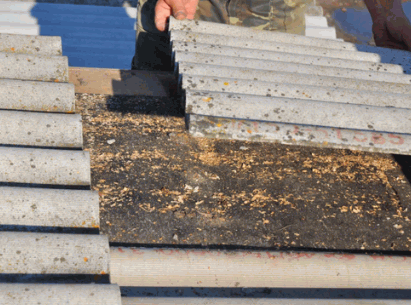
What Are The Options For Disposing Asbestos Roof?
There are several options for disposing of asbestos roofing materials, each designed to comply with environmental standards and safety regulations.
Typically, these options include transporting the materials to a licensed landfill equipped to handle hazardous waste or utilizing specialized recycling programs that adhere to local guidelines. Engaging professional contractors ensures that the disposal process is handled correctly and safely.
Utilizing these disposal methods is not just about compliance; it’s crucial for the protection of human health and the environment. Here are some key aspects to consider:
- Licensed Landfills: Choose facilities that meet government standards to ensure safe containment.
- Recycling Programs: Investigate local initiatives that promote the safe repurposing of asbestos materials.
- Professional Contractors: Hiring specialists guarantees that all safety protocols are followed.
By prioritizing these disposal methods, one can significantly reduce risks associated with hazardous waste and ensure environmental protection.

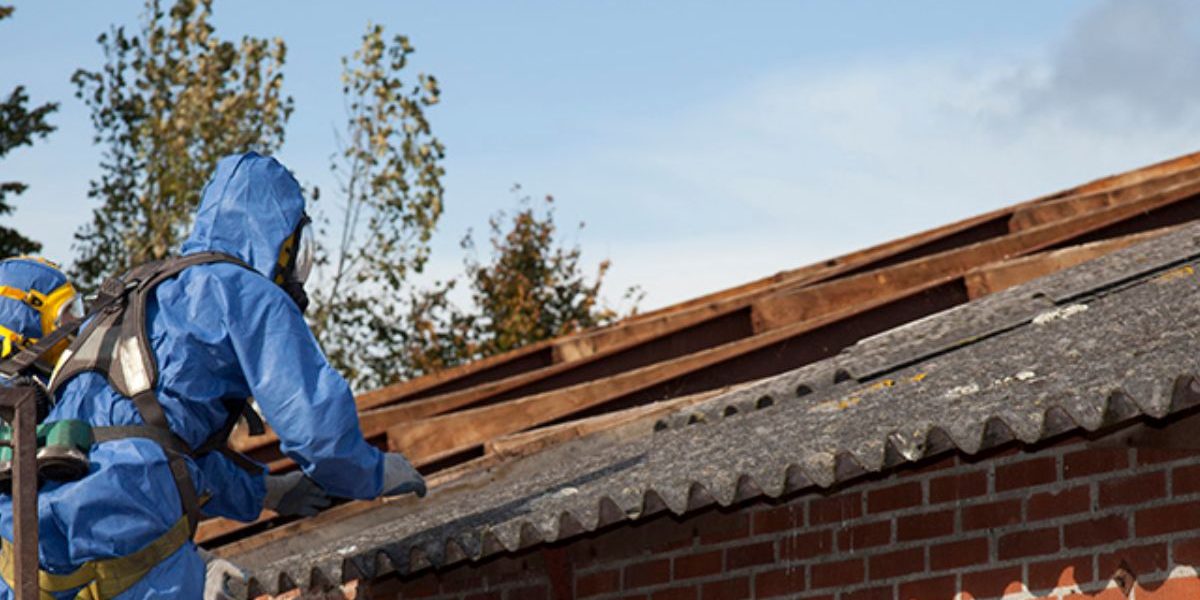
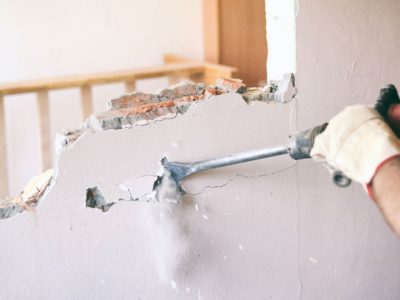
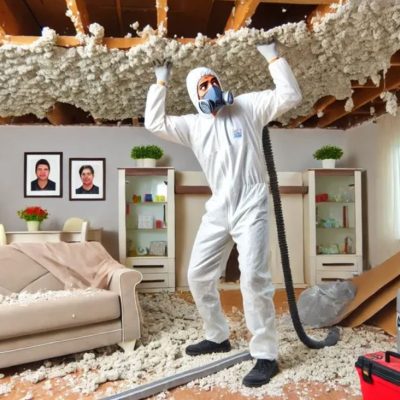
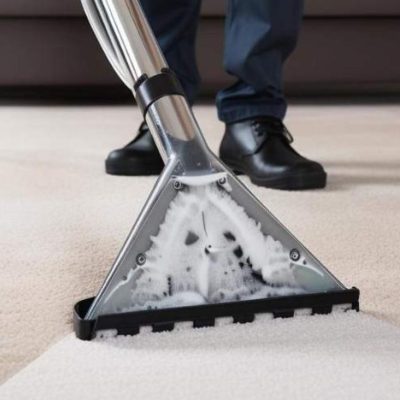
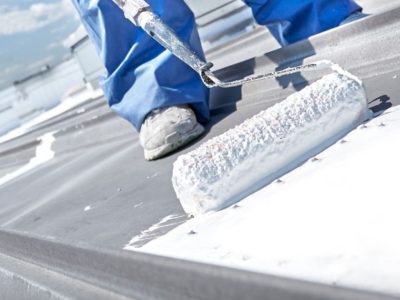
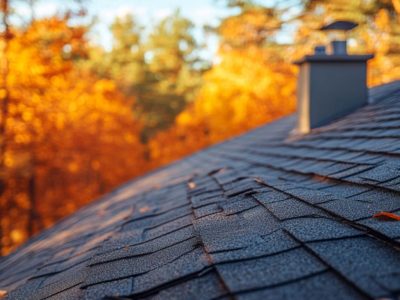
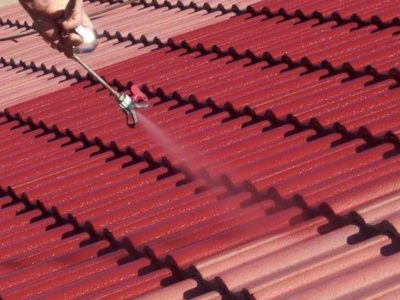

Comments